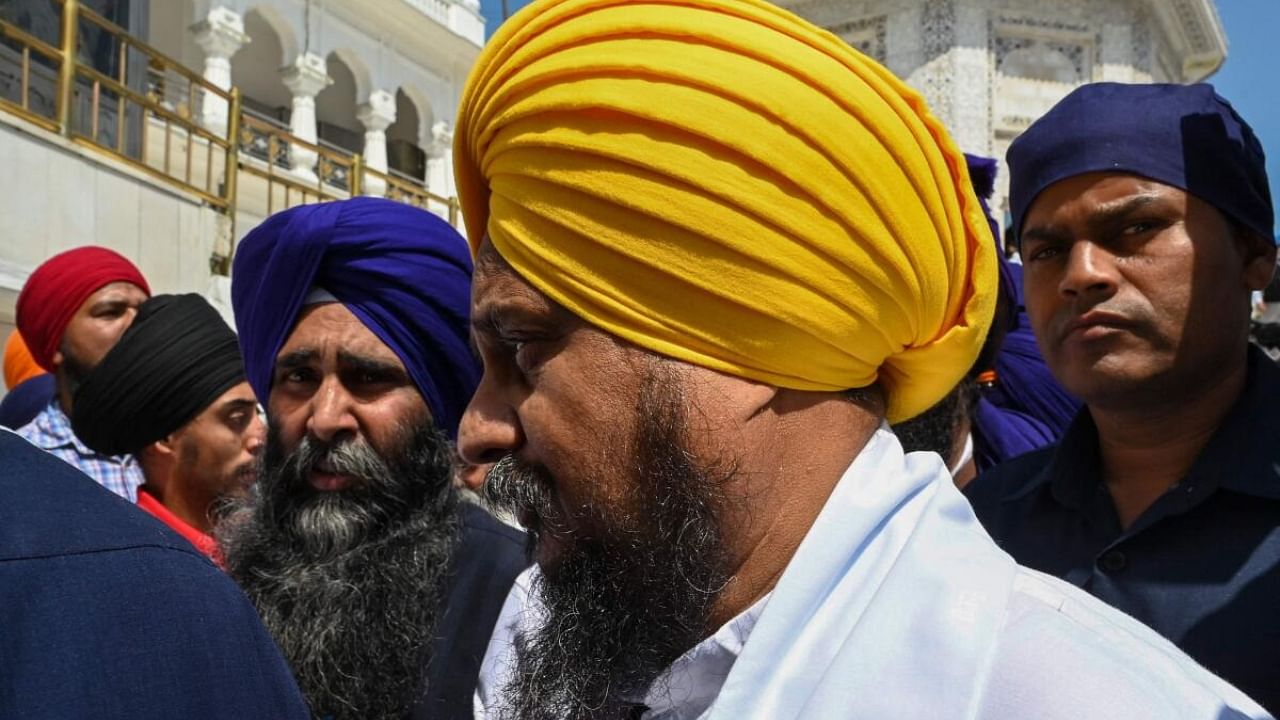
Amritpal Singh, the Waris Punjab De chief on the run from the Punjab government crackdown on the pro-Khalistani leader, urged for a Sarbat Khalsa to be called on Baisakhi in a video released on YouTube.
His call to Giani Harpreet Singh or Singh Sahib, the head priest of the Akal Takht, the highest temporal seat of Sikhs came a day after Punjab CM Bhagwant Mann slammed Singh, who is the Jathedar.
Bringing the Akal Thakht to the frontline, Amritpal urged the Jathedar to call the special gathering of Sikhs from all over the world to discuss issues the community is facing.
What is Sarbat Khalsa?
During the 18th century, the Sarbat Khalsa and Gurmata were two major social institutions that became a critical part in the Sikh struggle.
The Sarbat Khalsa literally refers to the entire Khalsa community. Guru Gobind Singh established the Khalsa in 1699 AD after which the word became prominent.
It was a version of the Panth notion and as Sikhism flourished it met with various socio-political and cultural challenges compelling the community to convene to devise ways to resolve these issues.
Guru Gobind Singh also established a practice where the whole Khalsa would congregate at the Sri Akal Takht in Darbar Sahib Gurdwara, Amritsar during Baisakhi and Diwali to meditate on the Sikh practice.
After this, Sikhs began to meet at the designated times and pass resolutions in the presence of the Guru Granth Sahib. These gatherings came to be known as Sarbat Khalsa and decisions adopted by the group were labelled Gurmata.
Since Guru Gobind Singh had invested Panth with Guruship, the Sarbat Khalsa acquired dignity and their resolutions were considered to be imbued with sacredness.
Sarbat Khalsa is open to all Sikh males and females and a premium is placed on the Guru Granth Sahib during meetings. While Sarbat Khala used to meet twice a year on average, routine judgements do not get Gurmata importance.
This is reserved for exceptional decisions made unanimously during Khalsa sessions which discuss specific issues.
Bhai Mani Singh convened these gatherings at the start of the 18th century and Akalis conducted similar assemblies in the late 18th century.
How does Sarbat Khalsa function?
Sarbat Khalsa is a democratic institution in composition and operation. The entire Sikh Panth used to attend the sessions. While gathered at Akal Takht for Sarbat Khalsa, nobody can claim dominance.
The Sarbat Khalsa has gathered to discuss national and regional issues with members retaining fundamental concepts of equality, accountability, and unity.
Collective actions are taken objectively and the Sarbat Khalsa appoints a committee to implement the Gurmata decisions. This body is accountable to the parent group for its activities with the latter holding the authority to alter it as needed.
Sarbat Khalsa has made decisions on territory acquisitions, successions of confederacies, campaign strategies, and assessing the growth of Sikhism, among other matters.
During Zaman Shah's raids in the 18th century, the Sarbat Khalsa began to see a decline in the number of congregators but the idea remained alive among Sikhs.
Amritpal is not the first person in recent times to call for a Sarbat Khalsa with a panel being convened in 2019, which demanded the release of Sikh prisoners serving life sentences.